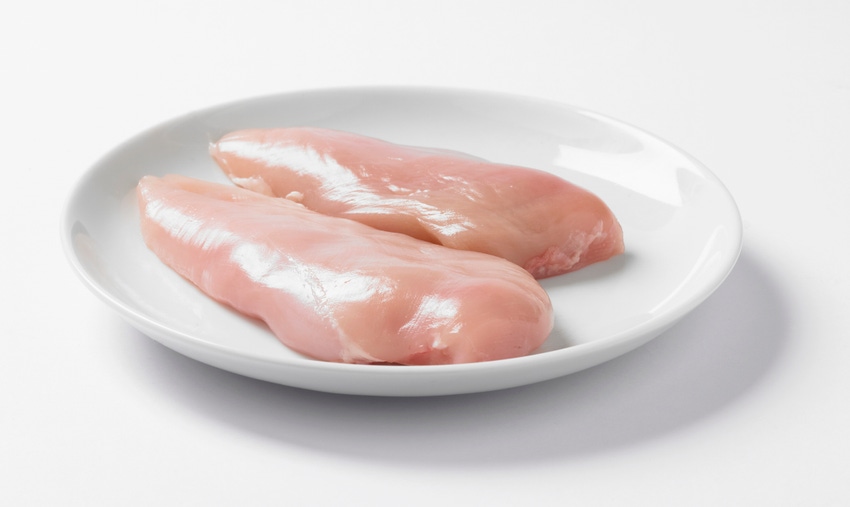Further development of this system may provide processors a tool to sort breast fillets for presence and severity of woody breast.
March 16, 2018

The U.S. Poultry & Egg Assn. (USPOULTRY) and the USPOULTRY Foundation announced the completion of a funded research project at the University of Arkansas in Fayetteville, Ark., in which research demonstrated the possibility to automate grading of woody breast fillets.
In the project, Dr. Casey Owens at the University of Arkansas department of poultry science used automated vision grading to detect the woody breast condition in broiler carcasses prior to evisceration.
Owens said an emerging problem in the broiler industry is a condition referred to as woody breast, a condition in which hard fibers are found in the breast meat, causing the texture to be tough and chewy. The incidence can be up to 30% for moderate and severe cases, especially in heavy broilers, Owens said.
Woody breast can cause alterations in meat quality such as loss of water holding capacity and hardened texture alterations that result in downgrades and even condemnations. Furthermore, this condition can cause potential problems with processing methods such as deboning, portioning and tumble marination.
On-line process control is a developing area for poultry processing because it can allow processors to have more real-time process control, Owens explained. Vision grading systems are used in the industry to help sort product before cut-up processes to maximize profitability of cuts.
Data collected using vision grading include body dimensions and identification of missing parts, Owens said, adding that the use of a non-destructive and non-contact vision grading technology could provide a powerful real-time tool to assess woody breast in carcasses.
Images of 1,203 male broiler carcasses from three commercial strains and five ages (six, seven, eight, nine and 10 weeks of age) were captured prior to evisceration. Whole breast fillets were scored for woody breast severity based on tactile evaluation. Broiler carcass images were processed and analyzed using ImageJ software. Various parameters for carcass conformation were measured.
Correlations between woody breast scores (deboned fillets) and carcass measurements were evaluated, Owens said, noting that the M4 (angle at keel), M9 (the ratio width at tail end to 20% fillet length) and M3 (tail/caudal width) had the highest correlations to WB score.
Predictive models were developed using the features of carcass width (upper/cranial end) and area of lower tail (caudal) keel tip region along with the angle of the keel tip region; the sensitivity rates for predicting either mild or moderate/severe categories were very high.
Owens concluded that this study provides a strong proof of concept that carcass conformation/shape features can be used to predict woody breast in deboned fillets. Although more development is needed to implement this system, it is achievable and potentially possible, using existing commercial vision grading systems.
You May Also Like



